#philip pullman trilogy
Text
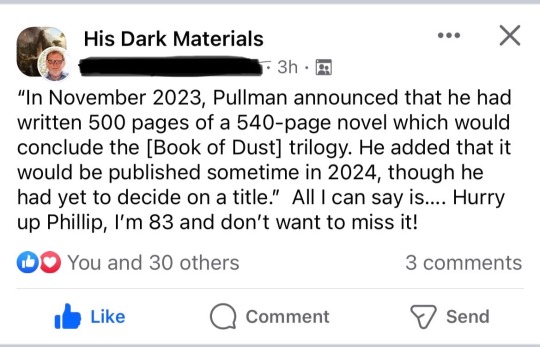
#the book of dust#philip pullman#hdm#his dark materials#book#book news#writing#trilogy#lyra#lyra silvertongue#author#tbod#la belle sauvage#the secret commonwealth
139 notes
·
View notes
Text
Which version of this do you prefer?


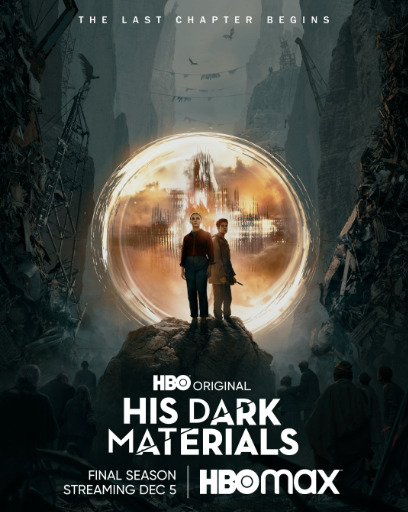
#his dark materials#his dark materials hbo#his dark materials show#his dark materials tv#his dark materials books#his dark materials trilogy#the golden compass#the golden compass film#the subtle knife#the amber spyglass#philip pullman#lyra belacqua#will parry#books#films#tv series#tv shows#fantasy#fantasy series#fantasy tv shows#fantasy tv#fantasy books#fantasy films#polls#adaptation polls
6 notes
·
View notes
Text
It's wild reading La Belle Sauvage and realising how much everything and everyone revolves around Lyra.
#there are so many people that get involved#characters from the first trilogy that played a part#everyone involved has something going on in regards to what lyra is a part of or others get involved#his dark materials#philip pullman#the book of dust#la belle sauvage#lyra belacqua#lyra silvertongue
4 notes
·
View notes
Text
A list of some alterhuman identities and groups (cut version)
About this article
This article is a five-minute read. It gives definitions and sources about (in alphabetical order) alterhumans, constelics, daemons, dragons, endels, furries, fictionfolk, nonhumans, otherkin, plural systems, therianthropes, tulpas, and vampires. These alterhuman community historians, archivists, and writers wrote this article together in August and September 2023: Orion Scribner, House of Chimeras, Page Shepard, Dinocanid, Ryuu Yumemoto, Draconic Wizard Workshop, and others. You have permission to repost this article, if you keep the list of authors, don't change what the article says, and don't use it for money. This is shared under this type of Creative Commons license: Attribution-NonCommercial-NoDerivs (CC BY-NC-ND).
Alterhumans
In 2014, Lio of the Crossroads System created this word as an umbrella term and identity for anyone who feels they have an identity beyond the scope of how one might typically think of “being human.”^1 Later, the alterhuman advocacy group Alt+H popularized this word. According to the coiner and Alt+H, it includes but is not limited to nonhumans.^2 Some groups who can opt-in to considering themselves under the alterhuman umbrella are otherkin, therianthropes, fictionfolk, plural systems, daemians, vampires, voluntary identities, furries, and more.^3 This umbrella is very broad because its purpose is to give these communities something to unite under without erasing their distinctions.^4
Constelic
Coined by Extranth in 2021, a person who is constelic identifies with or as one or more entities, objects, concepts, species, items, or characters throughout their life.^5 A constelic may collect or hoard any number of these identities for any number of reasons, as their identities are non-inherent and are considered to be entirely extrinsic.^6 Constels may be voluntary or involuntary identities,^7 and can be intense or casual, but they are often non-permanent.^8
Daemians and daemons
Daemians are people who have daemons, which are most often described as mental constructs or a part of an individual’s consciousness which has been assigned a unique gender, form, and personality.^9 Some daemians consider themselves plural.^10 Their community started in 2002, inspired by Philip Pullman’s His Dark Materials fantasy novel trilogy.^11
Dragons
The dragon community started in the 1990s in an online group called alt.fan.dragons.^12 They identify as dragons for spiritual or psychological reasons. They are draconic, and they refer to this part of themselves as their draconity.^13 In the 2000s, the dragon community started to mingle with the other communities: with dragon otherkin (dragonkin)^14 and dragon therians.^15
Endels
Mental health experts say that being alterhuman isn’t the same as being mentally ill.^16 For alterhumans who do have mental illnesses, that can be an important part of their everyday life and their sense of self. Endel is a word for alterhuman identities that are rooted in or greatly influenced by delusion. Babydog coined this word in 2021, by and for delusional alterhumans.^17
Furries
The furry fandom is a large subculture that began at sci-fi conventions in the 1980s.^18 It’s for creating and enjoying art, stories, costumes, and roleplay about fictional human-like (anthropomorphic) animal characters, called furries. Many fandom participants choose to represent themselves as their furry persona (fursona), which can be just for fun, though it can be meaningful about who they are.
Fictionfolk
Fictionfolk is an umbrella term for many sorts of identities that come partly or wholly from fiction.^19 Fictionkin identify as characters or species from fiction,^20 and their community started in the early 2000s.^21 A plural system member with origins from fiction is a fictive, which psychologists call a fictional introject.^22 When someone has the brief experience of becoming someone or something from fiction, that’s a fictionflicker, which psychologists call experience-taking.^23
Nonhumans
An umbrella term for those of us who identify as partly or wholly not human: therianthropes, otherkin, and more. Many nonhumans opt to include themselves under the alterhuman umbrella.
Otherkin
Otherkin are elves, dragons, or other beings, usually from mythology. It’s always an important part of who they are throughout their lives, not role-play for fun.^24 The community started in the Elfinkind Digest mailing list in 1990, when they started calling themselves otherkind or otherkin.^25 Their reasons for being otherkin are often spiritual, for example, from reincarnation.^26 However, otherkin is not a religion.^27
Plural systems
Plurality (or multiplicity) is an umbrella term for all experiences and identities in which more than one entity, consciousness, or pseudo-consciousness exists within one physical body,^28 for systems who are or can be diagnosed with dissociative identity disorder (DID), formerly called multiple personality disorder (MPD), as well as systems who do not meet those diagnostic criteria. Plurality and multiplicity as terms have always been inclusive of systems regardless of their origin or diagnoses.^29 Some plural systems have members who aren’t human or who are fictional characters or species.^30 Multiplicity can be an interchangeable synonym for plurality, or multiplicity can mean a form of plurality in which more than one person, self, or identity is within a single body.^31
Therianthropes
Therianthropes are people who have a lifelong identification as a certain species of animal on an integral, personal level.^32 Some are other species than animals from Earth.^33 The therian community started in 1993 in an online group, alt.horror.werewolves.^34 They developed jargon about shapeshifting to describe feeling more animal-like at some times. These changes are mental or spiritual, not physical.^35 Some have sensations of phantom limbs.^36 Some feel consistently animal-like at all times.^37 In the late 1990s and early 2000s, therians started mingling with the otherkin community.^38
Tulpas and tulpamancers
A tulpamancer is someone who practices tulpamancy, which is the act of creating tulpas.^39 A tulpa is an autonomous conscious entity who shares the body and brain of their creator.^40 Tulpamancy is often considered to be a part of the plurality umbrella.^41
Vampire Community
The vampyre or vampire community (VC) is for people who identify as vampires and require sustenance.^42 Those who drain energy are energy vampires or psi-vampires.^43 Sanguinarians drink blood.^44 Hybrid vampires need both.^45 Vampire lifestylers and donors are in the VC, too.^46
None of the above
Some participants of our communities are not themselves alterhumans. However, they’re here because they’re curious, or they’re our friends, family, and partners.
-
Endnotes
Please click to open this so you can read all of the sources that we cited. They are all here below.
1. Lio of the Crossroads System (September 26 2014). "This will probably be my last post on semantics..." Phasmovore. https://phasmovore.tumblr.com/post/98482696958/
2. Lio of the Crossroads System (May 27, 2023). https://x-rds.tumblr.com/post/712949341799727104/
Alt+H (September 17 2021) “What does alterhuman mean?” Alt+H. https://blog.alt-h.net/post/165592493965/what-does-alterhuman-mean
3. Kiera Ember. “Alterhuman Dictionary.” Beyond Humanity. https://www.beyondhumanity.net/alterhuman-dictionary/dictionary-a
Ana Valens (September 25 2020). “Otherkin are the internet’s punchline. They’re also our future.” Daily Dot. https://www.dailydot.com/irl/otherkin/
Alt+H, “FAQ” https://alt-h.net/educate/faq.php
4. Lio of the Crossroads System (February 19, 2023). https://x-rds.tumblr.com/post/709694807213211648/
5. Extranth. “An Introduction to Constelic” https://web.archive.org/web/20230519124625/https://constelic.carrd.co/
6. Extranth (May 19, 2021). “Constelic!” https://extranth.tumblr.com/post/651652168396472320/constelic-1-whats-constelic-constelic-or
7. Constelic (May 27, 2022). “How are Constelic and Otherlink different?” https://constelic.tumblr.com/post/685380822139813888/how-are-constelic-and-otherlink-different
8. Constelic (April 12, 2022). “The wild thing with stels for me is how sometimes…” https://constelic.tumblr.com/post/681308197084135424/the-wild-thing-with-stels-for-me-is-how-sometimes
9. The Daemon Page, “Introduction” https://daemonpage.com/introduction.php
10. Daemians & Daemons (March 18 2023). “Hey there! This is a bit of a discussion question…” https://www.tumblr.com/daemians-n-daemons/712142103972560896/hey-there-this-is-a-bit-of-a-discussion-question
Rani (June 21 2022). “Okay so I was right dæmonism is turning into my…” A Dragon’s Journal. https://a-dragons-journal.tumblr.com/post/687725978250870784/okay-so-i-was-right-d%C3%A6monism-is-turning-into-my
11. House of Chimeras (October 8 2022). “A Timeline of the Daemon Community” pg. 3 https://drive.google.com/file/d/1GVSBMvwKIyTvDIqyqXy2C_7Q4Qx4UK3A/view
12. ExistingPhantom (October 3 2001). “Alt.Fan.Dragons Frequently Asked Questions.” Dragons Must Be Here. https://web.archive.org/web/20050219002348/http://www.dmbh.org/dragonfire/IndexFAQ.html
13. Baxil (December 1999). “Draconity FAQ.” Tomorrowlands. http://www.tomorrowlands.org/draconity/faq/index.html
Orion Scribner (September 8, 2012), Otherkin Timeline, version 2.0 http://frameacloud.com/wp-content/uploads/2015/01/Scribner_Timeline2p0.pdf p. 36
14. Orion Scribner, Otherkin Timeline, p. 53.
15. Daski (August 17, 2022). “Therian: Dispelling the Earthen Animal Myth.” The River System. https://theriversystem.neocities.org/essays/EarthenMyth.html
16. Gavia Baker-Whitelaw (February 22, 2015). “Understanding the otherkin.” The Kernel. Archived March 18, 2015. https://web.archive.org/web/20150318110839/http://kernelmag.dailydot.com/issue-sections/features-issue-sections/11866/otherkin-tumblr-definition-pronouns/
17. Babydog, “Endel” https://endel.carrd.co/
18. Fred Patten (July 15 2012). "Retrospective: An Illustrated Chronology of Furry Fandom, 1966–1996". Flayrah. https://www.flayrah.com/4117/retrospective-illustrated-chronology-furry-fandom-1966%E2%80%931996
19. Poppy (January 24, 2023). “Quick guide to fictionfolk terminology.” Aestherians. https://aestherians.tumblr.com/post/707370073217695744/
20. Mordax. “What is Fictionkin? An exploratory definition”. From Fiction. https://web.archive.org/web/20220728060858/https://fromfiction.net/index.php/what-is-fictionkin-an-exploratory-definition/
21. House of Chimeras (June 21, 2021). A Timeline of the Fictionkin Community, Version 1.0. https://drive.google.com/file/d/1w4vGsWkiGPjYtXvTe4PyCcZsPba1kb_p/view?usp=sharing Page 4.
22. Ryn (Aristocrats) (October 18, 2021). “Fictives: A short introduction” https://pluralsoapbox.wordpress.com/2021/10/18/fictives-a-short-introduction/
Sark (The Interstellar System) (August 9, 2021). “Fictive and Factive FAQ” https://interstellarsystem.weebly.com/fictive-and-factive-faq.html
23. Geoff F. Kaufman, Lisa K. Libby (2012). “Changing Beliefs and Behavior Through Experience-Taking.” Journal of Personality and Social Psychology, 2012; DOI: 10.1037/a0027525 https://psycnet.apa.org/doiLanding?doi=10.1037%2Fa0027525
24. Lupa (2007), A Field Guide to Otherkin, Stafford, England: Immanion Press, pp. 27, 108-109.
25. Arethinn (September 6, 2021). “A brief(ish) history of the word ‘otherkind’.” Mythsong. https://www.mythsong.net/history/wordhist.html
26. Lupa, pp. 57-66, 287.
27. Lupa, p. 30; and Devin Proctor (May 2019), On Being Non-Human: Otherkin Identification and Virtual Space. The George Washington University. https://search.proquest.com/openview/e156c24bf65c4efb0918a8db37433cce/ pp. 94-95.
28. FreyasSpirit (Lucia Batman) and Irenes (Irene Knapp), “Plurality Playbook” https://freyasspirit.com/plurality-playbook/
29. LB Lee (May 28, 2020). “Quick'n'Dirty Plural History... Part 1 (1811-1980ish)” https://lb-lee.dreamwidth.org/1111069.html
LB Lee (June 30, 2020).”Plural History part 2: The Memory Wars” https://lb-lee.dreamwidth.org/1116190.html
LB Lee (July 30, 2020). “Plural History, part 3: Usenet and its spin-offs and Soulbonders” https://lb-lee.dreamwidth.org/1120824.html
LB Lee (August 31, 2020). “Quick'n'Dirty Plural History, part 4 (LJ, the Genic Slapfight, and THE END!)” https://lb-lee.dreamwidth.org/1129216.html
30. House of Chimeras (May 1, 2021). “A Collection of Mentions of Nonhuman and Fictional-Based Members of Plural Systems” https://drive.google.com/file/d/17TKE_8Lx2ljuTpHNclvaXqvA5AAlkG90/view
31. Manchester Metropolitan University, “Understanding Multiplicity” https://www.mmu.ac.uk/mmud8/media/10605/download
32. Sonne (2008). “Terms and definitions.” Project Shift. https://projectshift.therianthropy.info/terms-definitions-by-sonne/
33. Daski (August 17, 2022). “Therian: Dispelling the Earthen Animal Myth.” The River System. https://theriversystem.neocities.org/essays/EarthenMyth.html
34. House of Chimeras (19 November 2021). A Timeline of the Therianthrope Community, Version 1.1. https://drive.google.com/file/d/1jDmjl78hQ2BiQtzQMTV3yRQkrIgB9eUZ/view?usp=sharing P 9.
35. Clegg, H., Collings, R., & Roxburgh, E. C. (2019). “Therianthropy: Wellbeing, Schizotypy, and
Autism in Individuals Who Self-Identify as Non-Human.” Society & Animals, 27(4), pp.
403-426. doi: https://doi.org/10.1163/15685306-12341540
36. Jakkal (October 6, 2001). “Therianthropy- an overview." Shifters.org. Archived 2002-11-10.
https://web.archive.org/web/20021101165313/http://www.shifters.org/overview/therianthropy.asp
37. Akhila (April 2005). “The Contherian FAQ.” https://akhila.feralscribes.org/2005/the-contherian-faq/
38. House of Chimeras (November 19, 2021). A Timeline of the Therianthrope Community, Version 1.1. https://drive.google.com/file/d/1jDmjl78hQ2BiQtzQMTV3yRQkrIgB9eUZ/view?usp=sharing Pp. 27, 56.
39. Tulpa.io, “Terminologies” https://web.archive.org/web/20160405214050/http://tulpa.io/terminologies
40. Luigi.exe/The Dragonheart Collective (January 12, 2020). “Tulpamancy FAQ” https://docs.google.com/document/d/1-Yb6dfm4JxR5u_oNpHrttJyJHc0NvMhkKUP4Btc4jPc/edit#heading=h.h3onkkn
41. Tulpa.io, “What Is A Tulpa?” https://web.archive.org/web/20160318054103/http://tulpa.io/what-is-a-tulpa
42. Jayden Night, “What is Vampirism?” https://web.archive.org/web/20080511200648/http://sphynxcatvp.nocturna.org/articles/jn-vamprism.html
43. Fvorboda, “Psy Vampirism” https://web.archive.org/web/20080513030621/http://sphynxcatvp.nocturna.org/articles/dyscracia-psivamps.html
44. #Sanguinarius IRC (May 26, 2007). “A Discussion of Sang and Psi Vampires” https://web.archive.org/web/20080108215555/http://www.sanguinarius.org/articles/sang-and-psi-disc.shtml
45. Enygma, “Real Vampires” https://web.archive.org/web/20080511201408/http://sphynxcatvp.nocturna.org/faq/most-enygma.html
46. Sanguinarius: The Vampire Support Page, (July 4, 2006). “Sainguinarus Terminology & Lingo” https://web.archive.org/web/20080521005735/http://www.sanguinarius.org/terminology.shtml
#original post#otherkin#alterhuman#therianthrope#endel#daemian#plural#constelic#nonhuman#dragon#furry#fictionfolk#article#rated G#screen reader friendly#our writing#long post#A list of some alterhuman identities and groups#alterhuman list
345 notes
·
View notes
Text

If you're missing Lockwood and Co, don't despair! Here are some recommendations from fans of the show and books to help fill the void while we fight for season 2 - please share far and wide <3
All recs are from responses to this post, myself and things I've seen floating around the internet (ie, Goodreads suggestions/lists). Recs may be based on specific characters, ships, tropes, genres, worldbuilding or just general ~vibes.
Please make sure to check all content warnings before reading/watching any recommendations on this list.
Books (standalone)
Spellbound by F. T. Lukens
The Agency for Scandal by Laura Wood
The Dead Romantics by Ashley Poston
The Cheat Sheet by Sarah Adams
This May End Badly by Samantha Markum
Cemetery Boys by Aiden Thomas
The Ex Hex by Erin Sterling
A Sky Painted Gold by Laura Wood
The Hidden Dragon by Melissa Marr
Trouble by Lex Croucher
Books (series - *ongoing)
Shades of Magic by V. E. Schwab
Skulduggery Pleasant by Derek Landy
A Good Girl's Guide to Murder by Holly Jackson
The Locked Tomb by Tamsyn Muir*
Virals by Kathy Reichs
The Shades of London by Maureen Johnson
The Raven Cycle by Maggie Stiefvater
Jackaby by William Ritter
Charlotte Holmes by Brittany Cavallaro
The Checquy Files by Daniel O'Malley
Alex Stern by Leigh Bardugo*
Stalking Jack the Ripper by Kerry Maniscalco
Scarlet by A. C. Gaughen
Renegades by Marissa Meyer
The Diviners by Libba Bray
City of Ghosts by Victoria Schwab
Percy Jackson & the Olympians by Rick Riordan
Mokee Joe by Peter J. Murray
Mortal Engines by Philip Reeve
Murder Most Unladylike by Robin Stevens*
Letters of Enchantment by Rebecca Ross*
The Left-Handed Booksellers of London by Garth Nix
Dreadwood by Jennifer Killick
The Empyrean by Rebecca Yarros*
The Bartimaeus Sequence by Jonathan Stroud
Ankh-Morpork City Watch (Discworld) by Terry Pratchett
The Mistborn Trilogy by Brandon Sanderson
Scarlett & Browne by Jonathan Stroud
His Dark Materials by Philip Pullman
Books (graphic novels)
Locke & Key by Joe Hill
Television series (*-ongoing)
School Spirits*
Buffy the Vampire Slayer
Shadow & Bone
Wednesday*
Stranger Things*
CW's Nancy Drew
Shadowhunters
Locke & Key
The Bastard Son and the Devil Himself
Spooksville
The Midnight Club
Teen Wolf
Dirk Gently's Holistic Detective Agency
Grimm
Please feel free to keep sending recommendations my way and I'll update this list as often as I can! Also let me know if you enjoy anything you found from this list, I'd love to know if you found it helpful :)
#lockwood and co#lockwood & co#locklyle#lucy carlyle#george karim#anthony lockwood#george cubbins#jonathan stroud#save lockwood and co#renew lockwood and co#holly munro#flo bones#lockwood#book recommendations#tv recommendations#netflix#savelockwoodandco#lockwoodandcosource#i'm so scared this will flop hahaha#but i just want to give the fandom some good vibes#and permission to take a break and enjoy some media
247 notes
·
View notes
Text
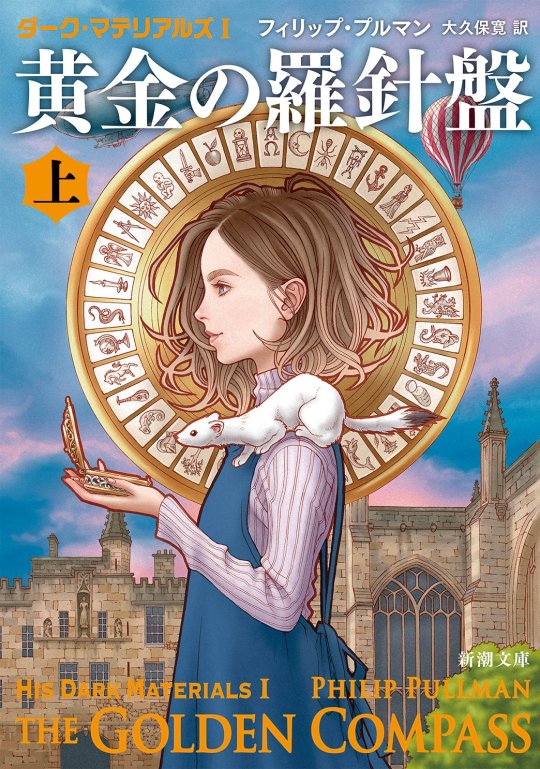
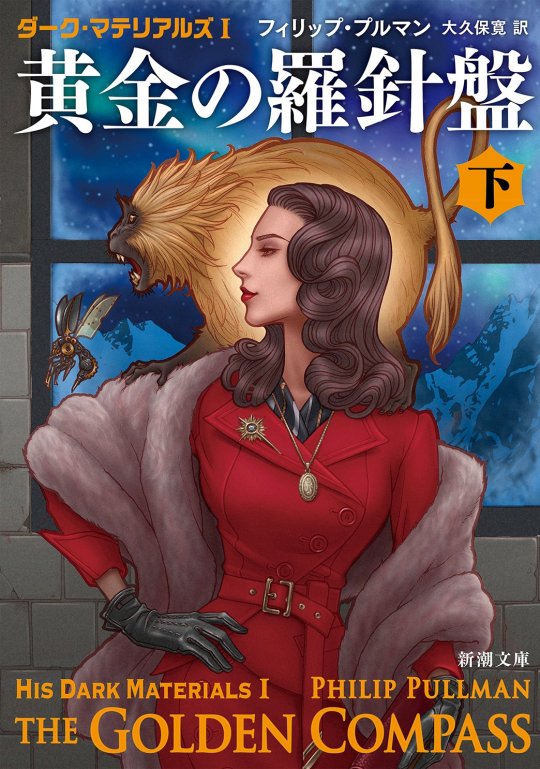





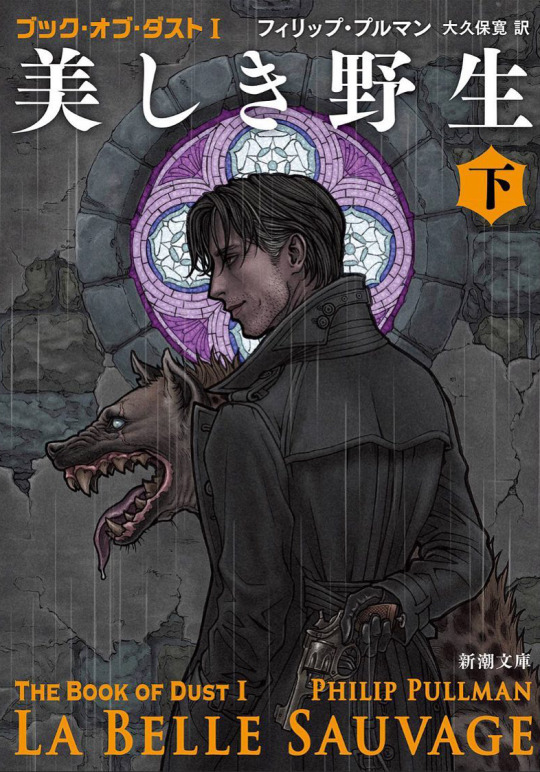
'The Golden Compass', 'The Subtle Knife', The Amber Spyglass' & 'La Belle Sauvage' by Takumi.
Cover art for the Japanese editions of the 'His Dark Materials' trilogy, and book 1 of 'The Book Of Dust' trilogy written by Philip Pullman.
#Art#Takumi#His Dark Materials#The Golden Compass#The Subtle Knife#The Amber Spyglass#The Book Of Dust#La Belle Sauvage#Lyra Belacqua#Lyra Silver Tongue#Mrs Coulter#Will Parry#Serafina Pekkala#Mary Malone#Lord Asriel#Malcolm Polstead#Gerard Bonneville#Books#Book Cover#Cover Art#Japan#Japanese
426 notes
·
View notes
Text
Tips To Consider When Writing A Fantasy Religious Story
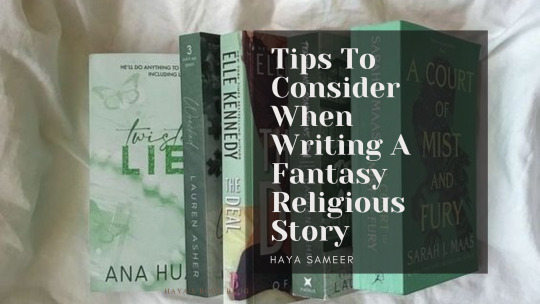
This was requested by @saltykidcreation if you want to request something send me an ask!
A fantasy religious story is a fantasy story where, even if a God-like character does not exist, true biblical values are made obvious in the book's theme because of the author's worldview. I personally don’t write fantasy religious stories, however, since this was requested I decided to come up with some tips for this genre.
Establishing a Rich Mythology
At the heart of every captivating fantasy religious story lies a well-crafted mythology that breathes life into the beliefs, deities, and rituals of your fictional world. Just as our world's religions have intricate backstories, your fantasy realm's mythology provides the framework for understanding the spiritual landscape. Here's how to create a mythology that resonates:
Deities and Powers
Develop a pantheon of gods and goddesses, each with distinct personalities, domains, and motivations. Consider drawing inspiration from real-world mythologies or inventing entirely new divine beings. For instance, in Neil Gaiman's "American Gods," gods from various cultures manifest in modern-day America, reflecting changing beliefs.
Rituals and Traditions
Infuse your world with rituals, ceremonies, and festivals that reflect the beliefs of your fictional religion. Whether it's a solemn pilgrimage to a sacred site or a joyful celebration of a deity's favour, these rituals offer opportunities to reveal cultural norms and values. Take the example of "The Name of the Wind" by Patrick Rothfuss, where the University's Archives hold religious significance, connecting knowledge and faith.
Holy Texts and Prophecies
Craft ancient texts, prophecies, or scriptures that guide your characters' beliefs and actions. These texts can hold hidden truths, enigmatic predictions, or moral codes that shape the course of the story. In Philip Pullman's "His Dark Materials" trilogy, a mysterious device called the Alethiometer becomes a tool of divination, echoing themes of destiny and belief.
Cultural Impact
Consider how your fictional religion influences art, architecture, fashion, and daily life in your world. Are there specific symbols associated with the faith? Does the religion inspire grand cathedrals, tranquil monasteries, or vibrant marketplaces? J.K. Rowling's "Harry Potter" series exemplifies this through the majestic Hogwarts Castle and its hidden rooms dedicated to various founders' beliefs.
A well-developed mythology adds depth and authenticity to your fantasy religious story, enriching readers' immersion and emotional engagement. As your characters interact with these elements, their beliefs will take centre stage, shaping their decisions and driving the narrative forward.
Worldbuilding and Cultural Depth
Creating a compelling fantasy religious story extends beyond the spiritual realm—it involves crafting an immersive world where faith intertwines with culture, society, and daily life. As you build your fantastical universe, keep these worldbuilding aspects in mind to ensure a rich and authentic backdrop for your narrative:
Cultural Diversity:
Just as our world hosts a tapestry of cultures, your fantasy realm should embrace diversity. Explore how different regions or communities within your world interpret and practice the same religion. George R.R. Martin's "A Song of Ice and Fire" series masterfully showcases distinct religious beliefs held by various societies, adding layers of complexity to the narrative.
Social Impact:
Consider how religion shapes social hierarchies, class systems, and power dynamics. Does the priesthood hold political sway? Are certain religious groups marginalized or revered? In Ursula K. Le Guin's "The Left Hand of Darkness," the planet Gethen's religious beliefs are deeply tied to its unique genderless society.
Iconography and Architecture:
Infuse religious symbolism into architecture, art, and everyday objects. Temples, sculptures, and artefacts can embody beliefs and tell stories within your world. The stained glass windows of Notre Dame Cathedral in Victor Hugo's "The Hunchback of Notre Dame" visually depict biblical narratives while reflecting the spiritual essence of the setting.
Language and Terminology:
Develop specialized terminology, prayers, and phrases specific to your fantasy religion. This linguistic distinctiveness adds authenticity and depth to the faith. J.R.R. Tolkien's "The Lord of the Rings" features languages like Elvish that enrich the cultures and religions of Middle-earth.
Impact on Conflict and Plot:
Explore how religious differences can drive conflict or cooperation within your story. Religious tensions can lead to political strife, wars, or alliances. In Frank Herbert's "Dune," the complex interplay between the Fremen's religious beliefs and the political landscape fuels the narrative's intrigue.
Remember, effective worldbuilding integrates religious aspects seamlessly into every facet of your fictional world. By intertwining faith with culture, you'll create a vivid and immersive environment that enriches your readers' experience and deepens their connection to your story.
Weaving Themes of Faith and Doubt
Central to any fantasy religious story are the themes of faith, doubt, and the profound quest for meaning. These themes can elevate your narrative, sparking introspection and emotional resonance. Here's how to skillfully weave these threads throughout your story:
Character Beliefs
Explore how characters' beliefs shape their worldviews, actions, and interactions. Does a protagonist's unwavering faith lead them on a heroic journey, while a sceptical character questions the mystical elements surrounding them? In C.S. Lewis's "The Chronicles of Narnia," characters' diverse beliefs guide their roles in the unfolding saga.
Spiritual Journeys
Craft character arcs that mirror spiritual journeys, complete with challenges and revelations. Allow characters to grapple with doubts, undergo transformative experiences, and emerge with a deeper connection to their faith. The character Eowyn in J.R.R. Tolkien's "The Lord of the Rings" confronts her inner struggles and finds a newfound purpose.
Crisis of Faith
Introduce moments of crisis where characters' faith is tested to its limits. These moments can lead to internal turmoil, moral dilemmas, and choices that define their paths. In Philip K. Dick's "Do Androids Dream of Electric Sheep?" the protagonist questions the nature of humanity, blending themes of religion with questions of identity.
Divine Intervention
Explore the concept of divine intervention and its impact on characters' lives. This can be a source of guidance, trials, or even scepticism. In "American Gods" by Neil Gaiman, the gods' involvement in human affairs raises questions about their true motivations and the nature of belief.
Existential Quests
Delve into existential themes as characters search for meaning beyond the material world. Incorporate quests that transcend physical boundaries, encouraging characters to uncover truths about existence, mortality, and the afterlife. Terry Pratchett and Neil Gaiman's "Good Omens" humorously navigates themes of fate, destiny, and the cosmic battle between good and evil.
By exploring the intricate balance between faith and doubt, you'll create characters who resonate with readers on a deeply human level. These themes not only enrich your narrative but also invite readers to ponder their own beliefs and uncertainties
Utilizing Symbolism and Allegory
In the realm of fantasy religious storytelling, symbolism and allegory serve as potent tools to convey layers of meaning and depth. These literary devices can bridge the gap between the fantastical and the profound, enriching your narrative in powerful ways:
Symbolic Artifacts
Introduce artefacts or objects that hold symbolic significance within your world. A mystical amulet, an ancient tome, or a sacred tree could embody themes of faith, wisdom, or protection. Consider the One Ring in J.R.R. Tolkien's "The Lord of the Rings," representing the corrupting influence of power.
Allegorical Journeys
Craft allegorical quests that mirror spiritual journeys or moral dilemmas. Characters might embark on physical journeys that parallel inner transformations, mirroring the trials and growth inherent in belief systems. In John Bunyan's "The Pilgrim's Progress," the protagonist's journey to the Celestial City mirrors the Christian path.
Metaphorical Creatures
Introduce fantastical creatures that symbolize spiritual concepts. A mythical phoenix representing rebirth or a guardian dragon embodying both danger and enlightenment can add layers of meaning to your narrative. In "The Chronicles of Narnia," Aslan the lion is a symbolic representation of Christ.
Cosmic Forces
Use cosmic events or celestial phenomena as metaphors for divine influence or moral alignments. A comet's appearance could herald significant events, while an eclipse might signify moments of transformation or impending conflict. The Dark Tower series by Stephen King weaves cosmic forces into the fabric of its multiverse narrative.
Subtextual Commentary
Employ allegory to comment on real-world issues or philosophical concepts. By grounding your fantastical narrative in allegorical discussions, you invite readers to reflect on broader themes while engaging with your story. George Orwell's "Animal Farm" is an allegory for political corruption and societal manipulation.
By artfully integrating symbolism and allegory, you add depth and resonance to your narrative. These devices not only enhance the fantastical elements of your story but also invite readers to explore the layers of meaning hidden beneath the surface.
Crafting Moral Dilemmas and Choices
A hallmark of captivating storytelling is the inclusion of moral dilemmas that challenge characters' beliefs, forcing them to confront their convictions and make difficult choices. Within the realm of fantasy religious stories, these dilemmas become even more potent, as characters navigate the intersection of faith, ethics, and personal growth:
Clashes of Belief
Introduce conflicts where characters' divergent beliefs clash, sparking debates and raising questions about the nature of truth and morality. Such clashes can lead to both external conflicts and internal struggles. In "The Golden Compass" by Philip Pullman, characters' differing beliefs influence their actions in a world with soul-representing daemons.
Test of Principles
Develop scenarios where characters must make choices that challenge their faith or require them to compromise their values. These choices can lead to soul-searching moments that reveal the depths of their character. Guy Gavriel Kay's "Tigana" explores characters' moral choices amid political and religious conflicts.
Consequences of Devotion
Examine the consequences of extreme devotion to a religious cause. Characters who blindly follow their faith might be driven to commit ethically questionable acts, raising questions about the balance between devotion and ethics. In "The Sparrow" by Mary Doria Russell, the characters' missionary zeal leads to unforeseen moral dilemmas on an alien planet.
Doubt and Redemption
Narrate character arcs that involve doubt and eventual redemption. Characters who experience crises of faith might embark on journeys of self-discovery and growth, ultimately finding renewed purpose or understanding. In "The Magicians" by Lev Grossman, the protagonist's journey of doubt and rediscovery aligns with themes of magic and faith.
Personal Growth Through Struggle
Showcase characters who emerge stronger from moral challenges, reflecting personal growth as they navigate the complexities of their beliefs. These experiences can lead to a deeper understanding of faith and a more profound connection to the divine. Jacqueline Carey's "Kushiel's Dart" features a protagonist whose unique perspective challenges and evolves her understanding of religion.
By infusing your narrative with moral dilemmas, you encourage readers to grapple with complex questions, fostering empathy and introspection. These dilemmas illuminate the nuances of faith and the intricate choices that define the paths characters undertake.
I hope this blog on Tips To Consider When Writing A Fantasy Religious Story will help you in your writing journey. Be sure to comment any tips of your own to help your fellow authors prosper, and follow my blog for new blog updates every Monday and Thursday.
Looking For More Writing Tips And Tricks?
Are you an author looking for writing tips and tricks to better your manuscript? Or do you want to learn about how to get a literary agent, get published and properly market your book? Consider checking out the rest of Haya’s book blog where I post writing and publishing tips for authors every Monday and Thursday! And don’t forget to head over to my TikTok and Instagram profiles @hayatheauthor to learn more about my WIP and writing journey!
#hayatheauthor#haya's book blog#haya sameer#haya blogs#writers on tumblr#writer community#writer tools#writer blog#writer stuff#writer wednesday#writer tips#creative writing#writers of tumblr#writerscommunity#writeblr#writing community#writer spotlight#writer things#writing prompt#writing tools#writing stuff#writing#writing life#writing inspo#writing help#writing advice#writing inspiration#writing ideas#writing things#writing tip
87 notes
·
View notes
Text
on philip pullman's approach to analyzing human nature vs jack thorne's
(posting here per request since the conversation on discord got, uh, distracted before i could put my thoughts into words)
bbc/hbo's his dark materials has expended on a lot of characters and plotlines that were only hinted at - or did not exist at all in many instances - in the his dark materials book trilogy.
one of the characters that was impacted by that a lot - if not the most of the whole cast - is mrs. marisa coulter. and while many media outlets and fans alike have been very pleased with the show's version of marisa in comparison with the book version (and i'm referring specifically and strictly how she was written, not how she's portrayed by ruth wilson), many of us on the discord server have felt that jack thorne's spin on the character resulted in major changes to her personality, to the worse.
it's a huge topic (which i love discussing but don't want to focus on too much in this post) but in short, many of us are in opinion that jack thorne's marisa coulter is significantly humanized and mellowed compared to philip pullman's, more palatable and more relatable... and thus considerably less fascinating and captivating than the books' version.
the thing about this is that i don't think this is something that's exclusive to thorne's interpretation of marisa. i think it's a trend that you can see in nearly all of the characters in the his dark materials tv show - especially the ones that were explored more deeply than in the books. i can see it with lyra, asriel, boreal - even will. and i think you can put it all down to a very basic approach to exploring and writing basic human nature that's vastly different between pullman and thorne.
with pullman's writing, i think he finds fascination in how different humans are from each other. pullman says: humanity is so varied; there are so many types of personalities; people can be really extreme; it's so interesting to explore the human nature in its weirdest and most unlikable, looking directly at the aspects people would rather not expose.
lyra, the protagonist, possesses many traditionally unlikable characteristics: she's a liar, she's rude, she's arrogant, she's blunt. asriel sets out to save humanity but he's far from a good person. he doesn't see all humans as equal; he sees roger as a tool to reach his means rather than a living person; he resents his daughter for being a unruly street urchin rather than an elegant scholar like himself and her mother. he berates marisa when she obtains traits he sees as inferior (her love for lyra, which he can't understand). and marisa herself... powerful and power-hungry and ruthful and remorseless. slick and skillfully manipulative. she knows the games in the society that she lives in and she plays them masterfully.
those are the characters pullman writes and explores. and not one of them is more or less human than the other. they're people; and "good" and "bad" are names we give to the things they do or the choices they make.
thorne's approach is no less thoughtful, but is significantly different. characters start off as having seemingly polarized traits, yes. but as thorne digs deeper, he finds that they have a lot in common with the perceived idea of an everyday person, and you can see that very early on in the show. asriel sincerely apologizes to lyra for not being able to spare more time and attention for her, and (infamously) declares that "everyone's special!"; marisa seems to form an emotional bond or attachment to lyra nearly as soon as the girl hugs her in jordan college (because who doesn't feel touched when being hugged by a grateful kid, right?); as she watches the severed children being rescued and shown affection in bolvangar, she looks stricken by remorse; she refuses asriel's offer to cross the bridge together because she feels committed to their child, not because of the magisterium. then in season 2, thorne invents a new side of marisa - a woman oppressed by a patriarchal society. she was oppressed as a scholar due to being a woman (in the books, female scholars were far from unheard of; marisa was a member of sofia's college, an all-women institution); she stares with longing at a woman working on a laptop while caring for a baby in a stroller; she's obviously jealous of mary. what woman can't relate to that, in this era of fourth wave feminism? then, as she faces lee scoresby - beaten and shackled and still gaining the emotional higher ground by appealing to marisa's (the master manipulator, the skilled torturer) emotions for her child - and he deduces that she was endured parental abuse as a child (which wasn't hinted at in the slightest in the books - in the book of dust we meet her mother, who's a terrible person but adores and idolizes her daughter to a fault). and of course that would tug at the audience's heartstrings - because how can you not understand marisa's vulnerability? how can you not feel bad for her, learning about the abuse she endured?
this is jack thorne's way of exploring characters and filling up gaps in their stories. this is his way of exploring humans. "deep down, we all have shared experiences and feelings." the more you learn about his characters, the more relatable they are. they become more palatable to the average viewer.
these are the two approaches, and neither of them are inherently wrong or bad. but they're profoundly different. and they create different characters.
and what we keep coming back to and complaining about on the discord server - specifically in the context of marisa but i do think other characters suffer from it too - that, compared to pullman's characterizations, the result is just... well, boring. or at least disappointing.
because what draws many of us to marisa, what makes her so magnetic and unique and unforgettable, was never her being relatable. in the books she's very unapologetically a horrible person; the show feels like it keeps making up excuses and apologies for her horrible deeds (so much that it even neuters just how terrible some of them were). the uncompromising extremes in her personality and her choices are exactly what make her so utterly fascinating and unusual. without excuses or explanations that would make her actions make more sense to the average reader. you rarely ever think "i'd have felt exactly the same! i'd have done exactly the same! i can perfectly understand her motivation here!" yet thorne tries to make you think exactly that.
and it's not wrong. i'd have loved it a ton if i were a show-only fan. but when you compare it to pullman's version - its intensity and spectacle, the heights and perils the story reaches with characters that are masterfully created as both extreme and human without compromise - thorne's is just ever so... dull.
and i honestly think the show would've been better and more successful if thorne didn't shy away from letting the characters be unrelatable. there seemed to have been intense concern in making the characters more easily digestible to as wide an audience as possible; and ironically i think that has caused the story to lose a ton of its initial appeal.
and i think the same worry was applied to thorne's handling of the plot; and the show suffered massively for that too; but that's a topic for a different post.
#his dark materials#marisa coulter#mrs coulter#philip pullman#jack thorne#the golden compass#the subtle knife#the amber spyglass#cozcat#(because you've asked me to post it#it turned out even longer than my message on the server daslghsdoighasd#i'm sorry i just find the topic so fascinating and intricate#and i could talk about it even more#but this will do for now)
215 notes
·
View notes
Text
I don't think I broadly advertised my website outside of the daemonism tag, so today I thought I'd throw the line into new waters.
Daemons are the personification of the second half of someone’s mental dialogue or subconscious. They are also seen as the manifestation of a person’s soul or inner-self that takes the form of an animal! Of course, animal forms are not a requirement, but if you are familiar with the Dark Materials trilogy by Philip Pullman, you'll know why daemons tend to stick to animals within the daemon community.
The practice of finding and cultivating a daemon has overlaps with other familiar practices, but we have been our own thing from the start! I encourage anyone who's been needing a bit of support, encouragement, or self-love to check out what daemonism can offer. Also, form finding is just plain ol' fun. Who doesn't want to know what animal they are? ;)
Both singlets and systems can have daemons! So I encourage everyone who's ever been curious about daemons, or never heard of them, to see what they are all about! You won't regret it.
- Signed a daemian who's lived with a very pretentious daemon for the past 20 years who doesn't regret a single moment.
I'm really bad at selling this, but daemons are like... the best things ever, in my opinion. I'm bias, but it's for a reason. Couldn't imagine going without my little crew. Even if you don't take interest it's a great place to at least know what daemons are when you see them pop up in plural spaces on the rare occasion.
#actually plural#endo safe#endogenic#mixed origin system#actually did#osdd#daemonism#dæmonsim#tulpa#tulpamancy#headmate#plural#system stuff#plural system
49 notes
·
View notes
Text
#hdm#his dark materials#the golden compass#the subtle knife#the amber spyglass#philip pullman#books#booklr#polls#hdm poll#trilogy
54 notes
·
View notes
Text
The Emperor-Verse: RWBY: Saints of Remnant, a reimagined AU(More details in Keep Reading!)
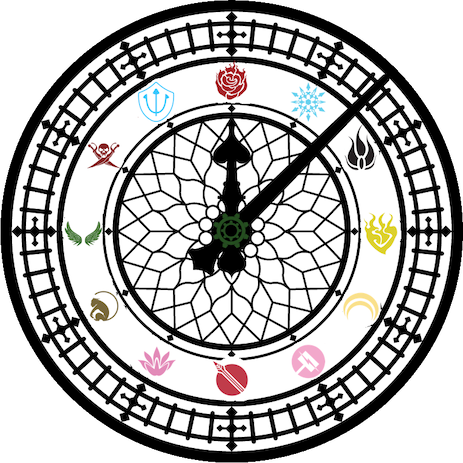
Once there was a world by the name of Omnibus. Created by the supreme deity The Author Allfather through the mysterious entity The Storyteller, this world was composed of four holy and mighty kingdoms, ruled by The Author’s Patron Saints whose reign protected the people, human and faunus alike, with their mighty armies, hunters, and their own holy powers from barbarian hordes, and the hordes of The Grimm who were the incarnations of hatred of the fallen seraph Grimmel The Black and his fellow fallen angels
In the dreadful world-shattering war of Ragnarök, the glorious age of Truth, Goodness, and Beauty, and the days of Romance, Heroism Adventure, and Eucatastrophe came to a tragic end.
Now all that remains is the world that is Remnant
But there is a prophecy made by Ozma The First Time Wizard before his death at the hands of The Witch-Emperor, that one day the bloodlines of the original Patron Saints and the families betrothed to them will return to take up these powers, rally armies of the righteous, vanquish the darkness and restore the holy kingdoms and Omnibus and reign over them once more.
Sinners will become Saints
Legends shall be restored and new Legends will be born
And what was a Remnant, Shall Be Whole Again.
But until then, the Hunters lead a struggling battle against the Grimm while the modern kingdoms suffer under corruption of all kinds, both to the benefit of darker forces who have horrifying intentions for the world.
Cue Ruby Rose and her older half-sister Yang Xiao Long, they are about to enter Beacon Academy after being approved by the eccentric Professor Ozpin Pine along with the heiress Weiss Schnee and the introverted faunus Blake Belladonna forming team RWBY
Ozpin has also enrolled a few other students and transferred others.
The former forming team JNPR, and the latter being Team SSSN of Haven Academy
Ozpin seems to have his eye on all of them, but what for?
Heavily inspired by CS Lewis's series The Chronicles of Narnia
Main Ships Contained:
RoseGarden
BlackSun
Iceberg/Arctic Water
Arkos
Renora
and some other ships
Also will contain unorthodox reimagining such as Adam Taurus(He's an initial antagonist turned good) and the White Fang and Jacques Schnee and the SDC with their Canon!Counterparts replaced with substitutes among other things
Currently the concept is in the works in a series of notes.
Details of the Emperor-Verse
Now I'm sure there's some questions you probably are all asking which I assume are the same questions as my blog
“Why are you using your Religion?”
Mostly due to it being a strong foundation, notably theology, for most of my stories, there are many strong foundations of storytelling, religion, history, you can even fantasize science if you put the imagination, time, and effort into it.
After doing some soul searching and listening to the Narnia books on Audible, it became another important element in making this au and I might include elements of CS Lewis’ Space Trilogy
This AU is set in my fictional Multiverse The Emperor-Verse which Narnia is implied to exist in, or I should say had existed in(its set after The Last Battle)
“Isn’t this kind of entitled and disrespectful?”
Disagreement isn’t necessarily malicious, and entitlement is not inherently bad if its your opinions and subjective feelings which people are entitled to.
Tolkien was heavily inspired by his distaste for how Shakespeare handled certain concepts, such as the Ents when he was upset and dissatisfied that there were no walking talking trees in the Enchanted Fortest of Macbeth, and the Valar Aule the Smith and the origin of the Dwarves make him something of an Anti-Prometheus
Not to mention Philip Pullman, the author of His Dark Materials Trilogy, made it out his distaste how CS Lewis made the Chronicles of Narnia and his overall beef with Christianity, and nobody seems to take issue with that.
I’m not saying the direction RWBY went with V3 or Pyrrha and the rest of the cast potentially ending tragically in some way or another is objectively bad, it was just not my taste
And I am not saying every normal RWBY fan/RWDE person who liked it is an elitist about it nor are all of them trying to insult me and attack me personally or say my ideas are bad
Nor I’m not trying to change canon or its “trajectory” , nor am I doing this to spite Monty, especially when I never knew the guy. This is a difference in handling ideas and concepts.
I’m doing my RWBY AU, which will most likely be revamped into an original story since it takes a whole different directions with the characters and world, but it's mostly because with post V3 and now in retrospect I saw what this world, characters, ships and other ideas could have been all in a story I believe is worth telling. And I was disappointed that it wasn’t.
I mean yeah it's also due to personal tastes and preferences and subjective feelings, at least I’ve been told, but I also try to integrate that in a meaningful way.
So I hope you all enjoy what I have to offer, which will most likely be put on AO3 and FanFiction.Net, and who knows, I might get a few artists to commission to redesign some characters or illustrate some scenes if anyone is up for it.
#rwby au#rwby rewrite#I think#does it count as one?#or something else?#black sun#iceberg#rosegarden#arkos#renora#rwde#does this count as rwde#The Emperor-Verse#team rwby#team jnpr#team sssn#ruby rose#yang xiao long#blake belladonna#weiss schnee#sun wukong#neptune vasilias#scarlet david#sage ayana#jaune arc#pyrrha nikos#nora valkyrie#lie ren#oscar pine#professor ozpin
37 notes
·
View notes
Text
RWBY Fandom: “*sneer* the changes you made in this AU, its not RWBY anymore! Change it up and make it an original story!”
Me: Fine. *tweaks the designs, change the names, and aesthetics…*
Fandom: “Ah! This story is thinly-veiled fan fiction and its characters, world, and ships are clearly influenced by RWBY’s world, characters, and ships you wanted among other things along with you being butthurt which is pathetic and sad cope!
You should disengage the source material, use something else which you 100% agree with, grow up, and ya know, you need to learn to be more original!"
Me: "Philip Pullman did it with the Chronicles of Narnia in "His Dark Materials Trilogy" and you also got Omniman and Homelander from Invincible and The Boys who are Evil Superman..."
Fandom: "Well they can do that with your stuff, but you can't do that with our stuff."
Me:

#rwde#rwby au#toxic fandom#toxic fndm#toxic fanbase#they rig it so you can't win#like#what the hell do you want me to do#just throw it in the trash because its written for 'the wrong people'?#the boys#invincible#omniman#homelander#his dark materials#the golden compass#philip pullman#the chronicles of narnia
24 notes
·
View notes
Text
Favourite fantasy book series
I'm due for a reread for several, if not most of these, and I'm really interested to see how they rank with other people!
So please vote for your favourite of these and let me know which ones I've missed!
In no particular order:
The Lord of the Rings isn't on there because it has the uncontested top place in my heart, mind and soul forever and ever anyways and I can't chance it not taking first place in a poll on my blog, I would probably literally cry.
#books#fantasy literature#reading community#I don't know how to tag non fandom things#polls#my polls#in case I ever make more#please do give me recs#but also don't roast me too much for leaving out things there's only so many spots in these tumblr polls#also I've got a whole pile of German fantasy literature let me know if you want a poll for these#I've realised I haven't talked fantasy literature with anyone in too long#so please tell me about your favourites#lessa says
22 notes
·
View notes
Text
A list of some alterhuman identities and groups (uncut version)
About this article
This article is a five-minute read. It gives definitions and sources about (in alphabetical order) alterhumans, constelics, daemons, dragons, endels, furries, fictionfolk, nonhumans, otherkin, plural systems, therianthropes, tulpas, and vampires. These alterhuman community historians, archivists, and writers wrote this article together in August and September 2023: Orion Scribner, House of Chimeras, Page Shepard, Dinocanid, Ryuu Yumemoto, Draconic Wizard Workshop, and others. You have permission to repost this article, if you keep the list of authors, don't change what the article says, and don't use it for money. This is shared under this type of Creative Commons license: Attribution-NonCommercial-NoDerivs (CC BY-NC-ND).
Alterhumans
In 2014, Lio of the Crossroads System created this word as an umbrella term and identity for anyone who feels they have an identity beyond the scope of how one might typically think of “being human.”^1 Later, the alterhuman advocacy group Alt+H popularized this word. According to the coiner and Alt+H, it includes but is not limited to nonhumans.^2 Some groups who can opt-in to considering themselves under the alterhuman umbrella are otherkin, therianthropes, fictionfolk, plural systems, daemians, vampires, voluntary identities, furries, and more.^3 This umbrella is very broad because its purpose is to give these communities something to unite under without erasing their distinctions.^4
Constelic
Coined by Extranth in 2021, a person who is constelic identifies with or as one or more entities, objects, concepts, species, items, or characters throughout their life.^5 A constelic may collect or hoard any number of these identities for any number of reasons, as their identities are non-inherent and are considered to be entirely extrinsic.^6 Constels may be voluntary or involuntary identities,^7 and can be intense or casual, but they are often non-permanent.^8
Daemians and daemons
Daemians are people who have daemons, which are most often described as mental constructs or a part of an individual’s consciousness which has been assigned a unique gender, form, and personality.^9 Some daemians consider themselves plural.^10 Their community started in 2002, inspired by Philip Pullman’s His Dark Materials fantasy novel trilogy.^11
Dragons
The dragon community started in the 1990s in an online group called alt.fan.dragons.^12 They identify as dragons for spiritual or psychological reasons. They are draconic, and they refer to this part of themselves as their draconity.^13 In the 2000s, the dragon community started to mingle with the other communities: with dragon otherkin (dragonkin)^14 and dragon therians.^15
Endels
Mental health experts say that being alterhuman isn’t the same as being mentally ill.^16 For alterhumans who do have mental illnesses, that can be an important part of their everyday life and their sense of self. Endel is a word for alterhuman identities that are rooted in or greatly influenced by delusion. Babydog coined this word in 2021, by and for delusional alterhumans.^17
Furries
The furry fandom is a large subculture that began at sci-fi conventions in the 1980s.^18 It’s for creating and enjoying art, stories, costumes, and roleplay about fictional human-like (anthropomorphic) animal characters, called furries. Many fandom participants choose to represent themselves as their furry persona (fursona), which can be just for fun, though it can be meaningful about who they are.
Fictionfolk
Fictionfolk is an umbrella term for many sorts of identities that come partly or wholly from fiction.^19 Fictionkin identify as characters or species from fiction,^20 and their community started in the early 2000s.^21 A plural system member with origins from fiction is a fictive, which psychologists call a fictional introject.^22 When someone has the brief experience of becoming someone or something from fiction, that’s a fictionflicker, which psychologists call experience-taking.^23
Nonhumans
An umbrella term for those of us who identify as partly or wholly not human: therianthropes, otherkin, and more. Many nonhumans opt to include themselves under the alterhuman umbrella.
Otherkin
Otherkin are elves, dragons, or other beings, usually from mythology. It’s always an important part of who they are throughout their lives, not role-play for fun.^24 The community started in the Elfinkind Digest mailing list in 1990, when they started calling themselves otherkind or otherkin.^25 Their reasons for being otherkin are often spiritual, for example, from reincarnation.^26 However, otherkin is not a religion.^27
Plural systems
Plurality (or multiplicity) is an umbrella term for all experiences and identities in which more than one entity, consciousness, or pseudo-consciousness exists within one physical body,^28 for systems who are or can be diagnosed with dissociative identity disorder (DID), formerly called multiple personality disorder (MPD), as well as systems who do not meet those diagnostic criteria. Plurality and multiplicity as terms have always been inclusive of systems regardless of their origin or diagnoses.^29 Some plural systems have members who aren’t human or who are fictional characters or species.^30 Multiplicity can be an interchangeable synonym for plurality, or multiplicity can mean a form of plurality in which more than one person, self, or identity is within a single body.^31
Therianthropes
Therianthropes are people who have a lifelong identification as a certain species of animal on an integral, personal level.^32 Some are other species than animals from Earth.^33 The therian community started in 1993 in an online group, alt.horror.werewolves.^34 They developed jargon about shapeshifting to describe feeling more animal-like at some times. These changes are mental or spiritual, not physical.^35 Some have sensations of phantom limbs.^36 Some feel consistently animal-like at all times.^37 In the late 1990s and early 2000s, therians started mingling with the otherkin community.^38
Tulpas and tulpamancers
A tulpamancer is someone who practices tulpamancy, which is the act of creating tulpas.^39 A tulpa is an autonomous conscious entity who shares the body and brain of their creator.^40 Tulpamancy is often considered to be a part of the plurality umbrella.^41
Vampire Community
The vampyre or vampire community (VC) is for people who identify as vampires and require sustenance.^42 Those who drain energy are energy vampires or psi-vampires.^43 Sanguinarians drink blood.^44 Hybrid vampires need both.^45 Vampire lifestylers and donors are in the VC, too.^46
None of the above
Some participants of our communities are not themselves alterhumans. However, they’re here because they’re curious, or they’re our friends, family, and partners.
-
Endnotes
1. Lio of the Crossroads System (September 26 2014). "This will probably be my last post on semantics..." Phasmovore. https://phasmovore.tumblr.com/post/98482696958/
2. Lio of the Crossroads System (May 27, 2023). https://x-rds.tumblr.com/post/712949341799727104/
Alt+H (September 17 2021) “What does alterhuman mean?” Alt+H. https://blog.alt-h.net/post/165592493965/what-does-alterhuman-mean
3. Kiera Ember. “Alterhuman Dictionary.” Beyond Humanity. https://www.beyondhumanity.net/alterhuman-dictionary/dictionary-a
Ana Valens (September 25 2020). “Otherkin are the internet’s punchline. They’re also our future.” Daily Dot. https://www.dailydot.com/irl/otherkin/
Alt+H, “FAQ” https://alt-h.net/educate/faq.php
4. Lio of the Crossroads System (February 19, 2023). https://x-rds.tumblr.com/post/709694807213211648/
5. Extranth. “An Introduction to Constelic” https://web.archive.org/web/20230519124625/https://constelic.carrd.co/
6. Extranth (May 19, 2021). “Constelic!” https://extranth.tumblr.com/post/651652168396472320/constelic-1-whats-constelic-constelic-or
7. Constelic (May 27, 2022). “How are Constelic and Otherlink different?” https://constelic.tumblr.com/post/685380822139813888/how-are-constelic-and-otherlink-different
8. Constelic (April 12, 2022). “The wild thing with stels for me is how sometimes…” https://constelic.tumblr.com/post/681308197084135424/the-wild-thing-with-stels-for-me-is-how-sometimes
9. The Daemon Page, “Introduction” https://daemonpage.com/introduction.php
10. Daemians & Daemons (March 18 2023). “Hey there! This is a bit of a discussion question…” https://www.tumblr.com/daemians-n-daemons/712142103972560896/hey-there-this-is-a-bit-of-a-discussion-question
Rani (June 21 2022). “Okay so I was right dæmonism is turning into my…” A Dragon’s Journal. https://a-dragons-journal.tumblr.com/post/687725978250870784/okay-so-i-was-right-d%C3%A6monism-is-turning-into-my
11. House of Chimeras (October 8 2022). “A Timeline of the Daemon Community” pg. 3 https://drive.google.com/file/d/1GVSBMvwKIyTvDIqyqXy2C_7Q4Qx4UK3A/view
12. ExistingPhantom (October 3 2001). “Alt.Fan.Dragons Frequently Asked Questions.” Dragons Must Be Here. https://web.archive.org/web/20050219002348/http://www.dmbh.org/dragonfire/IndexFAQ.html
13. Baxil (December 1999). “Draconity FAQ.” Tomorrowlands. http://www.tomorrowlands.org/draconity/faq/index.html
Orion Scribner (September 8, 2012), Otherkin Timeline, version 2.0 http://frameacloud.com/wp-content/uploads/2015/01/Scribner_Timeline2p0.pdf p. 36
14. Orion Scribner, Otherkin Timeline, p. 53.
15. Daski (August 17, 2022). “Therian: Dispelling the Earthen Animal Myth.” The River System. https://theriversystem.neocities.org/essays/EarthenMyth.html
16. Gavia Baker-Whitelaw (February 22, 2015). “Understanding the otherkin.” The Kernel. Archived March 18, 2015. https://web.archive.org/web/20150318110839/http://kernelmag.dailydot.com/issue-sections/features-issue-sections/11866/otherkin-tumblr-definition-pronouns/
17. Babydog, “Endel” https://endel.carrd.co/
18. Fred Patten (July 15 2012). "Retrospective: An Illustrated Chronology of Furry Fandom, 1966–1996". Flayrah. https://www.flayrah.com/4117/retrospective-illustrated-chronology-furry-fandom-1966%E2%80%931996
19. Poppy (January 24, 2023). “Quick guide to fictionfolk terminology.” Aestherians. https://aestherians.tumblr.com/post/707370073217695744/
20. Mordax. “What is Fictionkin? An exploratory definition”. From Fiction. https://web.archive.org/web/20220728060858/https://fromfiction.net/index.php/what-is-fictionkin-an-exploratory-definition/
21. House of Chimeras (June 21, 2021). A Timeline of the Fictionkin Community, Version 1.0. https://drive.google.com/file/d/1w4vGsWkiGPjYtXvTe4PyCcZsPba1kb_p/view?usp=sharing Page 4.
22. Ryn (Aristocrats) (October 18, 2021). “Fictives: A short introduction” https://pluralsoapbox.wordpress.com/2021/10/18/fictives-a-short-introduction/
Sark (The Interstellar System) (August 9, 2021). “Fictive and Factive FAQ” https://interstellarsystem.weebly.com/fictive-and-factive-faq.html
23. Geoff F. Kaufman, Lisa K. Libby (2012). “Changing Beliefs and Behavior Through Experience-Taking.” Journal of Personality and Social Psychology, 2012; DOI: 10.1037/a0027525 https://psycnet.apa.org/doiLanding?doi=10.1037%2Fa0027525
24. Lupa (2007), A Field Guide to Otherkin, Stafford, England: Immanion Press, pp. 27, 108-109.
25. Arethinn (September 6, 2021). “A brief(ish) history of the word ‘otherkind’.” Mythsong. https://www.mythsong.net/history/wordhist.html
26. Lupa, pp. 57-66, 287.
27. Lupa, p. 30; and Devin Proctor (May 2019), On Being Non-Human: Otherkin Identification and Virtual Space. The George Washington University. https://search.proquest.com/openview/e156c24bf65c4efb0918a8db37433cce/ pp. 94-95.
28. FreyasSpirit (Lucia Batman) and Irenes (Irene Knapp), “Plurality Playbook” https://freyasspirit.com/plurality-playbook/
29. LB Lee (May 28, 2020). “Quick'n'Dirty Plural History... Part 1 (1811-1980ish)” https://lb-lee.dreamwidth.org/1111069.html
LB Lee (June 30, 2020).”Plural History part 2: The Memory Wars” https://lb-lee.dreamwidth.org/1116190.html
LB Lee (July 30, 2020). “Plural History, part 3: Usenet and its spin-offs and Soulbonders” https://lb-lee.dreamwidth.org/1120824.html
LB Lee (August 31, 2020). “Quick'n'Dirty Plural History, part 4 (LJ, the Genic Slapfight, and THE END!)” https://lb-lee.dreamwidth.org/1129216.html
30. House of Chimeras (May 1, 2021). “A Collection of Mentions of Nonhuman and Fictional-Based Members of Plural Systems” https://drive.google.com/file/d/17TKE_8Lx2ljuTpHNclvaXqvA5AAlkG90/view
31. Manchester Metropolitan University, “Understanding Multiplicity” https://www.mmu.ac.uk/mmud8/media/10605/download
32. Sonne (2008). “Terms and definitions.” Project Shift. https://projectshift.therianthropy.info/terms-definitions-by-sonne/
33. Daski (August 17, 2022). “Therian: Dispelling the Earthen Animal Myth.” The River System. https://theriversystem.neocities.org/essays/EarthenMyth.html
34. House of Chimeras (19 November 2021). A Timeline of the Therianthrope Community, Version 1.1. https://drive.google.com/file/d/1jDmjl78hQ2BiQtzQMTV3yRQkrIgB9eUZ/view?usp=sharing P 9.
35. Clegg, H., Collings, R., & Roxburgh, E. C. (2019). “Therianthropy: Wellbeing, Schizotypy, and
Autism in Individuals Who Self-Identify as Non-Human.” Society & Animals, 27(4), pp.
403-426. doi: https://doi.org/10.1163/15685306-12341540
36. Jakkal (October 6, 2001). “Therianthropy- an overview." Shifters.org. Archived 2002-11-10.
https://web.archive.org/web/20021101165313/http://www.shifters.org/overview/therianthropy.asp
37. Akhila (April 2005). “The Contherian FAQ.” https://akhila.feralscribes.org/2005/the-contherian-faq/
38. House of Chimeras (November 19, 2021). A Timeline of the Therianthrope Community, Version 1.1. https://drive.google.com/file/d/1jDmjl78hQ2BiQtzQMTV3yRQkrIgB9eUZ/view?usp=sharing Pp. 27, 56.
39. Tulpa.io, “Terminologies” https://web.archive.org/web/20160405214050/http://tulpa.io/terminologies
40. Luigi.exe/The Dragonheart Collective (January 12, 2020). “Tulpamancy FAQ” https://docs.google.com/document/d/1-Yb6dfm4JxR5u_oNpHrttJyJHc0NvMhkKUP4Btc4jPc/edit#heading=h.h3onkkn
41. Tulpa.io, “What Is A Tulpa?” https://web.archive.org/web/20160318054103/http://tulpa.io/what-is-a-tulpa
42. Jayden Night, “What is Vampirism?” https://web.archive.org/web/20080511200648/http://sphynxcatvp.nocturna.org/articles/jn-vamprism.html
43. Fvorboda, “Psy Vampirism” https://web.archive.org/web/20080513030621/http://sphynxcatvp.nocturna.org/articles/dyscracia-psivamps.html
44. #Sanguinarius IRC (May 26, 2007). “A Discussion of Sang and Psi Vampires” https://web.archive.org/web/20080108215555/http://www.sanguinarius.org/articles/sang-and-psi-disc.shtml
45. Enygma, “Real Vampires” https://web.archive.org/web/20080511201408/http://sphynxcatvp.nocturna.org/faq/most-enygma.html
46. Sanguinarius: The Vampire Support Page, (July 4, 2006). “Sainguinarus Terminology & Lingo” https://web.archive.org/web/20080521005735/http://www.sanguinarius.org/terminology.shtml
#original post#otherkin#alterhuman#therianthrope#endel#tulpa#daemian#plural#constelic#nonhuman#dragon#furry#fictionfolk#article#rated G#long post#our writing#A list of some alterhuman identities and groups#alterhuman list
69 notes
·
View notes
Text
As you know I am lifelong fan of Philip Pullman's His Dark Materials trilogy, and its sequel trilogy, The Book of Dust.
And let me tell you, if Lyra had been a Jewish teen/young woman during the Holocaust in Poland, she would have been the most AMAZING underground courier. To succeed, like, really succeed at making your way through Nazi-occupied Poland with contraband on your person, protected by only false papers, and "Aryan" looks, you have to be able to lie and bluff your way out of tight spots EXPERTLY. Like with a confidence and BDE that couldn't be taught. You had to LOVE lying. You had to take actual pleasure out of deceiving and manipulating Nazi officials and Polish civilians and Ukrainian camp guards. You had to REVEL in getting German officers to flirt with you and help you dodge inspections.
Fuck, Lyra would have been the queen of the kashariyot (the Hebrew terms used to describe the young female underground operatives who did this dangerous work in Occupied Poland.) Well, Mrs. Coulter would have been queen. But honestly we can't fully trust her not to play double agent and turn informer for shits and giggles, so, Lyra is queen.
ETA: Oooh also Eleanor Shellstrop.
26 notes
·
View notes
Text
Prelims round 1, poll 7
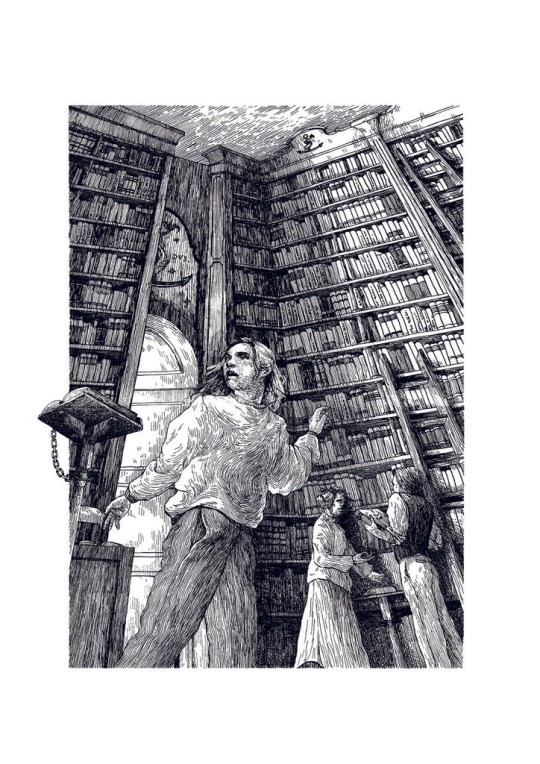
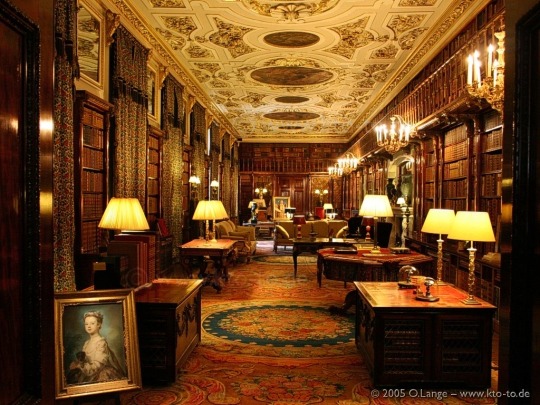

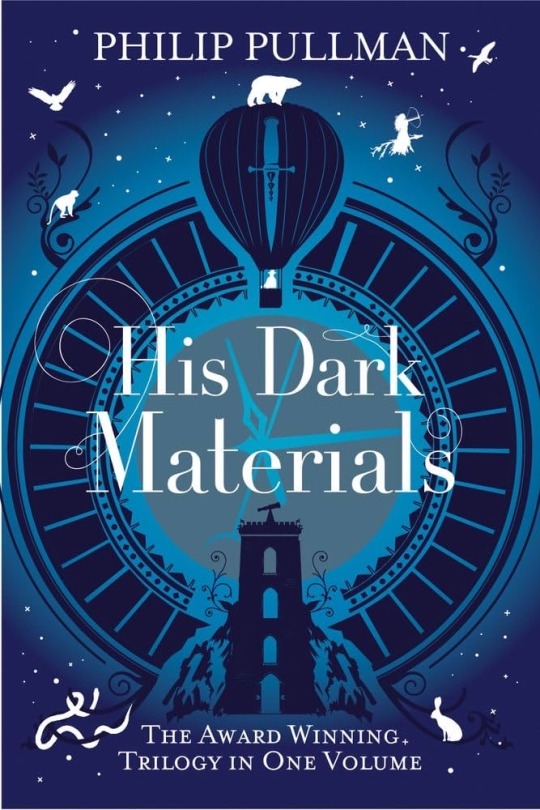
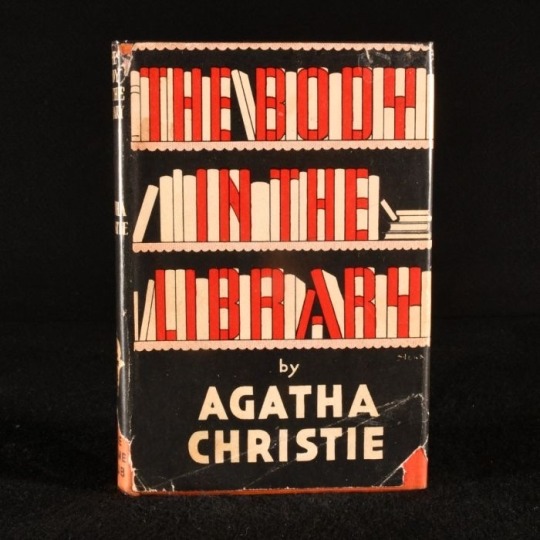

Propaganda
Elinor's library, Inkworld trilogy by Cornelia Funke:
None
Pemberley's library, Pride and Prejudice by Jane Austen:
Look we all know half of the reason Lizzie changed her mind on Darcy was the gardens. The other half is his library
Mrs Phelps' library, Matilda by Roald Dahl:
Matilda's safe place
Jordan Library, His Dark Materials by Philip Pullman:
None
Gossington Hall library, A Body in the Library by Agatha Christie:
None
The Great Archives, Sea of Stars:
The Great Archives is home to an immortal alchemist who's really just trying to stop his ex-boyfriend from being too evil.
(Resh'an, the Alchemist, has been calculating timelines and outcomes within the Great Archives for y'know, a casual few centuries). The Great Archives serves as a sort of teaser for the halfway point in the game as Resh'an narrates parts of the story from within the Archives anonymously, without the player knowing who or where he is until later on within the story, adding to the mystery. The Archives themselves are beyond a locked door in Antsudlo, and according to an alternate timeline, would've been locked, not allowing the protagonists through. However, Resh'an unlocks the doors in this timeline, revealing the Great Archives to the player as a sweeping library that he's been in for the duration of the game.
#fictional libraries#tumblr tournament#archives#books & libraries#fictional archives#libraries#tumblr polls#poll#sea of stars spoilers
17 notes
·
View notes